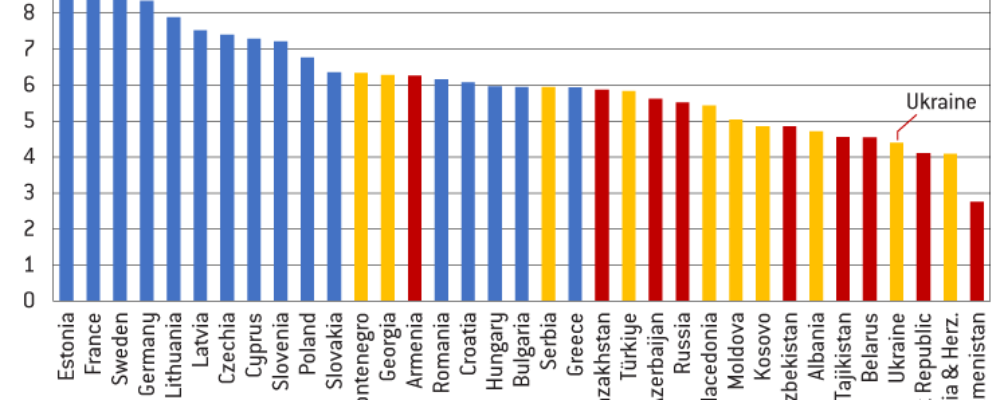
Many digital laws were enacted in the past, mostly under the EU’s Digital Agenda and Digital Single Market (DSM) programmes. In the current legislative term, which is coming to an end, important new measures relevant to digitalisation such as the Digital Markets Act (DMA), the Digital Services Act (DSA), the Data Act, the Artificial Intelligence Act (AI Act), the Data Governance Act (DGA), the European Health Data Space (EHDS), an update to the regulation on electronic identification and trust services (eIDAS 2) and a measure to strengthen the cybersecurity of critical infrastructure (NIS2) have been enacted, and most have already been published in the Official Journal.
The authors are providing successive editions of this dataset because it is important that the research community has tools to help them make sense of this wave of legislative measures.
The Overview of EU Legislation in the Digital Sector (Table 1) benefits from prior work. In the 2014‑2019 legislative term, the European Parliament’s Policy Department called for studies to assess the overall results of the legislative term. The De Streel and Hocepied (2019) report on legal characteristics of the Digital Single Market (DSM) provided a workable taxonomy, which Marcus et al (2019) used as a basis for assessing the economic results of the same measures. An earlier update to this body of work by Kai Zenner extended that analysis to cover measures in the early years of the 2019‑2024 legislative term.
The authors have attempted to ensure that the information provided is accurate, but we make no guarantees. Much of the information in our tables, especially information about measures that have already been enacted, is based on standard, publicly available sources. To the extent that we provide information about planned initiatives, the information is often based on official pronouncements of the European institutions, such as European Commission work programmes or State of the European Union addresses. Our assessment of planned initiatives also reflects first-hand knowledge, information from colleagues, and other sources.
In case of comments or requests, please contact us at [email protected]. We welcome input from knowledgeable stakeholders.
Table 1 provides an overview of legislative measures enacted, during the current legislative session, roughly following the taxonomy of de Streel and Hocepied (2019). We classify the measures depending on whether they primarily relate to (1) research and innovation; (2) industrial policy; (3) connectivity; (4) data and privacy; (5) intellectual property rights (IPR); (6) cybersecurity; (7) law enforcement; (8) trust and safety; (9) e-commerce and consumer protection; (10) competition, (11) media; and (12) finance
. We distinguish among (a) measures that have been enacted, versus (b) those that are in the legislative process, versus (c) initiatives that have been announced, but that are not yet formally in the legislative process.
To find the detailed text of legislation that has been enacted or negotiated, please follow the links that we have provided in the dataset.
Table 2 provides a list and taxonomy of the governmental and non-governmental bodies that in one way or another contribute to the implementation and enforcement of EU legislative measures that relate to digitalisation. The thematic taxonomy is the same as that used in Table 1, beginning with research and innovation, and continuing with industrial policy. Only EU bodies that have a role in implementing EU law relevant to digital services are included. Member state implementation bodies are not shown, nor are any expert groups that serve solely to provide the European Commission with high-level input and advice with the drafting of delegated or implementing acts. In Table 2, we distinguish between (1) EU institutions, (2) Executive agencies, (3) Decentralised agencies, (4) Governing boards, (5) Independent bodies, (6) Advisory bodies, (7) Networks of Member States, and (8) European Standardisation Organisations (ESOs).
In the July and the November editions of this dataset, we identified the most important legislative files for the 2019-2024 legislative term as being (1) the Digital Markets Act (DMA), (2) the Digital Services Act (DSA), (3) the Data Act and (4) the Artificial Intelligence Act (AI Act). This is still the view of the authors.
All four measures have been enacted, and all but the AI Act have already been published in the Official Journal. For each of these, a substantial amount of work will be needed at EU and member state levels to make them fully effective. The AI Act will be further specified by a large amount of secondary legislation such as guidelines, templates, codes of practice, and delegated as well as implementing acts.
The Data Governance Act is not dramatic in its impacts in and of itself, but it provides mechanisms that enable the creation of European data spaces such as the European Health Data Space (EHDS). A great deal of follow-up legislative and implementation work will be needed to create the data spaces, while some of them are also non-legislative in form of communications of the European Commission.
The European institutions have asked two prominent Europeans, Enrico Letta and Mario Draghi, to produce ‘blue ribbon’ reports to take stock of or measure progress to date and to provide forward-looking approaches to strengthen the EU’s Single Market and its innovation and competitiveness in the digital world. The Letta Report is already public (Letta, 2024), while the Draghi report is expected shortly, probably in June. The next term is sure to see increased focus on these closely interrelated themes.
Some of us have expressed our own views publicly on the EU’s digital innovation capacity (Marcus and Rossi, 2024) and on the closely related Single Market (Marcus J. S., 2024). We would argue that, in addition to addressing a wide range of subject matter issues (many of which have been well known for many years), it is time for the European institutions – not just the Commission – to invest more energy in improving the Better Regulation process by means of which the EU formulates its laws, and assesses whether changes are needed to make them effective. It also seems to us that a more centralised enforcement is required to effectively implement the large number of digital laws, either something like the UK’s Digital Regulation Cooperation Forum (Marcus J.S., 2024) or by a new EU digital enforcement agency.
When we published the first edition of the dataset, we announced our intention to publish updated editions at the end of 2023, and at the end of the legislative term in mid-2024. We have now done so.
The authors intend to continue to publish updated editions of this dataset as appropriate during the 2024-2029 legislative term; however, we expect to take a break, because new legislative proposals concerning digitalisation are unlikely to appear until the new Commission is firmly in place, and until a new course has been firmly charted. Furthermore, many voices are calling for a pause in new digital legislation to give firms and the member states an opportunity to catch up with implementation. We will resume at such time that we feel that enough new legislative proposals have been put forward to warrant an updated edition.
Meanwhile, and in line with improving the dataset, we are producing new tables that capture key hard and soft law at international level. We do not expect to capture every possible measure but expect to provide pointers to those that are most important and useful, especially to those of us who work primarily in the EU. We expect to publish the new tables as an annex to this edition of the dataset during the summer of 2024.
Established in 2005, it is independent and non-doctrinal. Bruegel’s mission is to improve the quality of economic policy with open and fact-based research, analysis and debate. We are committed to impartiality, openness and excellence. Bruegel’s membership includes EU Member State governments, international corporations and institutions.
Please visit the firm link to site






